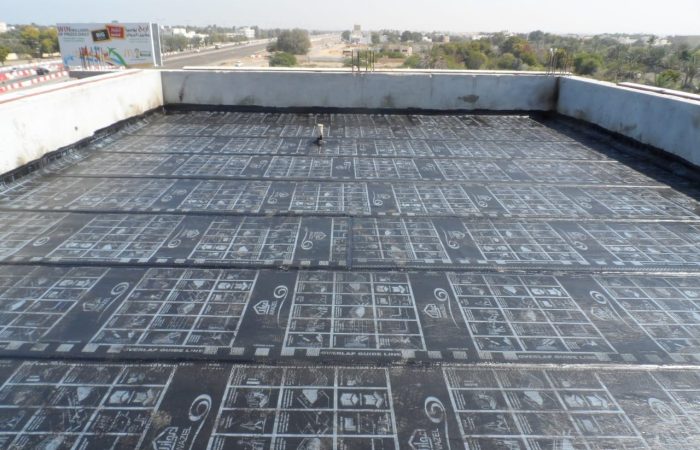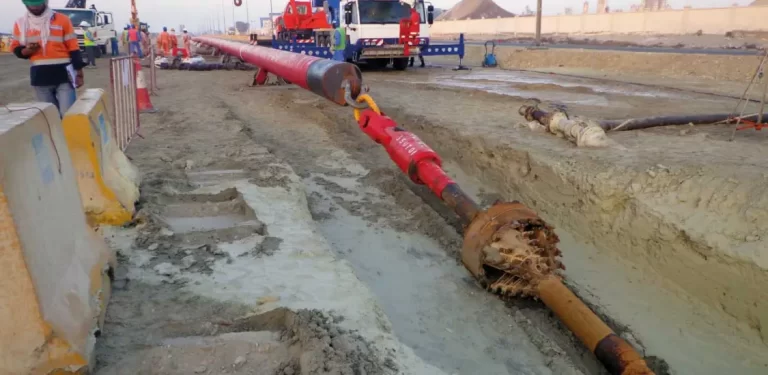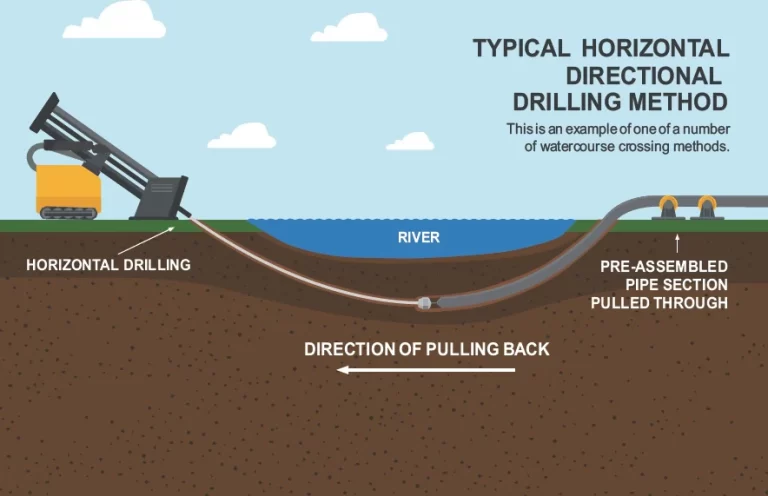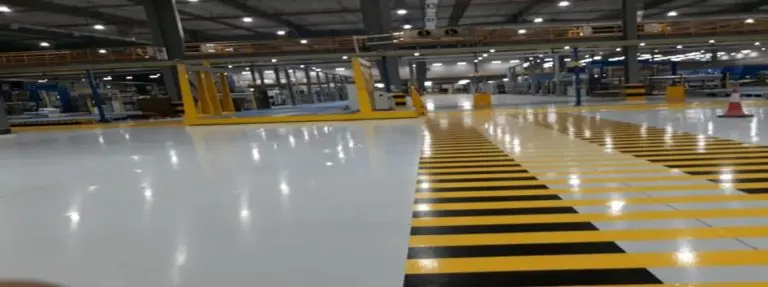Book Title: “Insulation Contracting in KSA: Challenges, Opportunities, and Best Practices”
Book Chapters:
Introduction to Insulation Contracting in KSA
Types of Insulation Materials Used in KSA
Challenges Faced by Insulation Contractors in KSA
Regulatory Requirements for Insulation Contracting in KSA
Best Practices for Insulation Contracting in KSA
Project Management in Insulation Contracting in KSA
Quality Control and Assurance in Insulation Contracting in KSA
Safety Measures in Insulation Contracting in KSA
Equipment and Tools Used in Insulation Contracting in KSA
Cost Estimation and Pricing Strategies in Insulation Contracting in KSA
Environmental Considerations in Insulation Contracting in KSA
Future Trends and Opportunities in Insulation Contracting in KSA
Case Studies of Successful Insulation Contracting Projects in KSA
Marketing and Business Development for Insulation Contractors in KSA
Conclusion: The Way Forward for Insulation Contracting in KSA
Book Introduction:
The Kingdom of Saudi Arabia (KSA) has been undergoing massive development in various sectors, including construction and infrastructure. With the increasing focus on energy efficiency and sustainability, the demand for insulation contracting has been on the rise in KSA. Insulation contracting involves the installation of various materials to control heat flow, reduce noise levels, and improve energy efficiency in buildings and industrial facilities.
This book, “Insulation Contracting in KSA: Challenges, Opportunities, and Best Practices,” aims to provide a comprehensive guide to insulation contracting in KSA. The book covers a range of topics, including the types of insulation materials used in KSA, the challenges faced by insulation contractors, regulatory requirements, best practices, project management, quality control, safety measures, equipment and tools, cost estimation, environmental considerations, future trends and opportunities, case studies, and marketing and business development.
Chapter 1: Introduction to Insulation Contracting in KSA
Chapter 1 provides an overview of insulation contracting in KSA, including its importance, applications, and benefits. The chapter also discusses the various types of insulation materials used in KSA, such as fiberglass, mineral wool, cellulose, and foam. It explains how each material works and their advantages and disadvantages. The chapter also highlights the different applications of insulation contracting in KSA, such as in residential, commercial, and industrial buildings, and the benefits, such as energy savings, noise reduction, and thermal comfort.
The chapter concludes by discussing the importance of insulation contracting in KSA, given the country’s harsh climate, where temperatures can reach up to 50°C in some regions. Insulation contracting plays a crucial role in ensuring comfortable living and working conditions, reducing energy consumption and greenhouse gas emissions, and improving the overall quality of life.
Chapter 2: Types of Insulation Materials Used in KSA
Chapter 2 delves deeper into the different types of insulation materials used in KSA, their properties, and applications. The chapter provides detailed information on the various types of materials, including fiberglass, mineral wool, cellulose, and foam, their R-values, densities, and thermal conductivity. The chapter also discusses the environmental impact of each material and their sustainability.
The chapter concludes by highlighting the importance of selecting the right insulation material for each project based on factors such as cost, performance, environmental impact, and suitability for the application.
Chapter 3: Challenges Faced by Insulation Contractors in KSA
Chapter 3 explores the challenges faced by insulation contractors in KSA, including regulatory requirements, shortage of skilled labor, weather conditions, and lack of awareness among clients. The chapter provides
Chapter 3 explores the challenges faced by insulation contractors in KSA, including regulatory requirements, shortage of skilled labor, weather conditions, and lack of awareness among clients. The chapter provides a detailed analysis of each challenge and its impact on insulation contracting projects in KSA.
One of the significant challenges faced by insulation contractors in KSA is regulatory requirements. Insulation contracting projects must comply with various regulations, including safety standards, environmental regulations, and building codes. Compliance with these regulations can be a daunting task for insulation contractors, especially those who are new to the market.
Another challenge faced by insulation contractors in KSA is the shortage of skilled labor. The country has a limited number of experienced and qualified insulation contractors, making it challenging to find skilled workers for insulation contracting projects. This challenge can lead to delays in project completion and compromise the quality of work.
Weather conditions are another challenge faced by insulation contractors in KSA. The country’s harsh climate can make it challenging to install insulation materials, particularly during the summer months when temperatures can reach up to 50°C. Working under these conditions can be dangerous for workers and affect the quality of work.
Finally, the lack of awareness among clients is a significant challenge faced by insulation contractors in KSA. Many clients do not understand the importance of insulation contracting and its benefits, leading them to overlook insulation contracting projects. This challenge can be addressed through education and awareness campaigns that highlight the benefits of insulation contracting.
The chapter concludes by providing recommendations on how insulation contractors in KSA can overcome these challenges, including investing in training and development programs for workers, adopting new technologies, improving project management, and building strong relationships with clients and stakeholders.
Chapter 4 discusses the importance of safety in insulation contracting projects in KSA. Insulation contractors are required to follow stringent safety regulations to ensure the safety of workers and prevent accidents and injuries in the workplace. The chapter provides an overview of the safety regulations that apply to insulation contracting projects in KSA and their impact on project execution.
One of the critical safety regulations that insulation contractors must comply with is the Occupational Health and Safety (OHS) regulations. These regulations establish minimum standards for workplace safety and require insulation contractors to develop and implement safety policies and procedures to protect workers. Failure to comply with these regulations can lead to severe penalties and fines.
Another important safety consideration in insulation contracting projects is the use of Personal Protective Equipment (PPE). Insulation contractors are required to provide workers with appropriate PPE, such as safety glasses, gloves, and respiratory protection, to protect them from hazards such as chemical exposure and falls.
In addition to these regulations, insulation contractors must also consider the unique safety risks associated with insulation contracting projects, such as working at heights, using insulation materials with hazardous properties, and working in confined spaces. Insulation contractors must develop and implement specific safety procedures to mitigate these risks and ensure the safety of workers.
The chapter concludes by emphasizing the importance of safety in insulation contracting projects in KSA and the need for insulation contractors to prioritize safety in all aspects of project execution. This includes conducting regular safety training and education for workers, conducting regular safety audits and inspections, and implementing continuous improvement programs to enhance safety performance. By prioritizing safety, insulation contractors can protect their workers, prevent accidents and injuries, and improve project outcomes.
Chapter 5 delves into the different types of insulation materials used in KSA insulation contracting projects. Insulation materials are critical components of insulation contracting projects, as they determine the effectiveness and efficiency of the insulation system. The chapter provides an overview of the most commonly used insulation materials in KSA, including their properties, advantages, and disadvantages.
One of the most commonly used insulation materials in KSA is fiberglass. Fiberglass insulation is made of glass fibers and is available in various forms, including batts, rolls, and blown-in. Fiberglass insulation is known for its thermal and acoustic insulation properties, as well as its affordability. However, fiberglass insulation can be irritating to the skin and respiratory system and requires careful handling during installation.
Another commonly used insulation material in KSA is mineral wool. Mineral wool insulation is made of mineral fibers and is available in various forms, including batts, rolls, and loose-fill. Mineral wool insulation is known for its thermal and acoustic insulation properties, as well as its fire resistance. However, mineral wool insulation can be expensive compared to other insulation materials.
Foam insulation is another type of insulation material used in KSA insulation contracting projects. Foam insulation is available in two forms: spray foam and rigid foam. Spray foam insulation is applied using a spray gun and expands to fill gaps and cracks, providing an airtight seal. Rigid foam insulation, on the other hand, is installed in panels and provides excellent thermal insulation properties. However, foam insulation can be expensive and may require specialized equipment and skills for installation.
Finally, reflective insulation is a type of insulation material that is commonly used in hot climates like KSA. Reflective insulation works by reflecting radiant heat away from the building, helping to keep it cool. Reflective insulation is lightweight, easy to install, and can be installed in various forms, including rolls, sheets, and panels. However, reflective insulation is less effective in colder climates and does not provide sound insulation.
The chapter concludes by emphasizing the importance of selecting the right insulation material for each project based on its unique requirements and specifications. Insulation contractors must consider factors such as the climate, building type, and budget when selecting insulation materials to ensure the best possible outcome for each project.
Chapter 6 focuses on the different types of insulation systems used in KSA insulation contracting projects. Insulation systems are composed of insulation materials, vapor barriers, air barriers, and other components that work together to provide thermal and acoustic insulation to a building or structure. The chapter provides an overview of the most commonly used insulation systems in KSA, including their properties, advantages, and disadvantages.
One of the most common insulation systems used in KSA is the batt insulation system. Batt insulation is composed of fiberglass or mineral wool batts that are installed between framing members, providing thermal and acoustic insulation. Batt insulation systems are relatively easy to install and can be used in various building types, including residential and commercial buildings. However, batt insulation systems may not provide complete coverage, and gaps or compressions in the insulation can reduce their effectiveness.
Blown-in insulation systems are another type of insulation system commonly used in KSA. Blown-in insulation systems are composed of loose-fill insulation materials, such as cellulose or fiberglass, that are blown into wall cavities or attic spaces using specialized equipment. Blown-in insulation systems are highly effective at filling gaps and voids, providing complete coverage, and improving the energy efficiency of a building. However, blown-in insulation systems may be more expensive than other insulation systems and require specialized equipment and skills for installation.
Spray foam insulation systems are another popular option for insulation contractors in KSA. Spray foam insulation systems are composed of spray foam insulation materials that are applied using a spray gun, expanding to fill gaps and voids and providing an airtight seal. Spray foam insulation systems provide excellent thermal insulation properties, as well as improved air and moisture barriers, reducing the likelihood of mold and mildew growth. However, spray foam insulation systems can be expensive and require specialized equipment and skills for installation.
Finally, reflective insulation systems are another type of insulation system used in KSA. Reflective insulation systems are composed of reflective insulation materials, such as foil-faced polyethylene or bubble wrap, that work by reflecting radiant heat away from the building. Reflective insulation systems are lightweight, easy to install, and can be used in various building types, including residential and commercial buildings. However, reflective insulation systems may not provide complete coverage and are less effective in colder climates.
The chapter concludes by emphasizing the importance of selecting the right insulation system for each project based on its unique requirements and specifications. Insulation contractors must consider factors such as the building type, climate, and budget when selecting insulation systems to ensure the best possible outcome for each project.
Chapter 7 delves into the importance of proper insulation installation in KSA insulation contracting projects. While selecting the right insulation system is crucial, it is equally essential to ensure that the insulation is installed correctly to maximize its effectiveness and longevity.
The chapter begins by outlining the various factors that can affect insulation installation, including the type of insulation material, the building type, and the installation method. It then discusses the importance of proper insulation installation techniques, including the use of vapor barriers, air barriers, and proper sealing to prevent air leakage and thermal bridging.
The chapter also highlights the importance of compliance with building codes and regulations in KSA. Insulation contractors must adhere to strict regulations and standards to ensure that insulation installation is performed safely and effectively. Failure to comply with these regulations can result in legal and financial consequences, as well as potential safety hazards.
Proper insulation installation can also improve the energy efficiency and indoor air quality of a building, reducing energy costs and improving the health and comfort of its occupants. The chapter provides tips and best practices for proper insulation installation, including proper preparation, handling, and installation techniques.
Additionally, the chapter emphasizes the importance of ongoing maintenance and inspection of insulation systems to ensure their continued effectiveness. Insulation systems can deteriorate over time, leading to reduced insulation performance and potential safety hazards. Regular maintenance and inspection can help identify and address potential issues before they become significant problems.
Overall, Chapter 7 highlights the importance of proper insulation installation techniques and adherence to building codes and regulations in KSA insulation contracting projects. Insulation contractors must prioritize proper installation to maximize the effectiveness and longevity of insulation systems, improve energy efficiency and indoor air quality, and ensure compliance with regulations and standards.
Chapter 8 focuses on the role of technology in modern insulation contracting in KSA. In recent years, technological advancements have significantly impacted the insulation industry, from material development to installation techniques and beyond.
The chapter begins by discussing the latest insulation materials, including eco-friendly options such as recycled materials, as well as innovative products that offer enhanced performance and durability. These materials are designed to meet the increasing demand for energy-efficient and sustainable insulation solutions in KSA.
The chapter then explores the use of technology in insulation installation techniques. Advancements such as robotic installation and thermal imaging allow for more precise and efficient insulation installation, reducing installation time and costs while improving the overall quality of the installation.
The chapter also highlights the importance of technology in ongoing maintenance and inspection of insulation systems. Tools such as infrared cameras and drone inspections enable insulation contractors to identify and address potential issues quickly and accurately, improving the lifespan and effectiveness of insulation systems.
Furthermore, the chapter discusses the role of technology in project management and communication between contractors and clients. Digital tools such as project management software and mobile apps streamline communication and facilitate collaboration between team members, enhancing productivity and efficiency.
Finally, the chapter emphasizes the importance of keeping up with the latest technological advancements and trends in the insulation industry. Contractors who embrace new technology and incorporate it into their operations can gain a competitive edge and improve their overall performance.
Overall, Chapter 8 highlights the significant role of technology in modern insulation contracting in KSA. Technological advancements offer insulation contractors new and innovative solutions to meet the increasing demand for energy-efficient and sustainable insulation solutions. Insulation contractors who embrace new technology can enhance their performance, productivity, and competitiveness in the market.
Chapter 9 delves into the importance of safety in insulation contracting projects in KSA. Insulation installation involves various hazards that can lead to serious injuries or fatalities if proper safety precautions are not taken.
The chapter begins by outlining the potential hazards associated with insulation installation, including falls from height, exposure to hazardous materials, and electrical hazards. It then discusses the importance of implementing a comprehensive safety program, including the use of personal protective equipment (PPE), regular training, and ongoing safety inspections.
The chapter also highlights the importance of compliance with KSA regulations and standards for insulation installation safety. Contractors must adhere to strict safety regulations to prevent accidents and protect workers from harm.
Furthermore, the chapter emphasizes the importance of communication and collaboration between contractors and clients regarding safety. Clear communication about safety procedures and potential hazards can prevent accidents and injuries and ensure that everyone involved in the project is aware of the risks and how to mitigate them.
The chapter provides practical tips for improving safety in insulation contracting projects, including the use of proper lifting techniques, safe use of equipment, and proper handling and disposal of hazardous materials.
Finally, the chapter emphasizes the importance of ongoing safety training and education for workers and contractors. Regular safety training can help workers stay up-to-date on the latest safety procedures and best practices, reducing the risk of accidents and injuries on the job.
Overall, Chapter 9 highlights the crucial role of safety in insulation contracting projects in KSA. Contractors must prioritize safety to prevent accidents and protect workers from harm. Compliance with regulations, clear communication about safety procedures, and ongoing safety training are essential components of a comprehensive safety program.
Chapter 10 focuses on the importance of quality control in insulation contracting in KSA. Insulation systems must meet strict performance standards to ensure their effectiveness in reducing energy consumption and maintaining indoor comfort levels.
The chapter begins by outlining the importance of quality control in insulation installation, including the use of standardized installation procedures, regular inspection and testing, and ongoing maintenance.
The chapter then discusses the various quality control measures that insulation contractors can implement to ensure the quality and performance of insulation systems. These measures include pre-installation inspections, quality checks during installation, and post-installation testing and inspection.
Furthermore, the chapter emphasizes the importance of ongoing maintenance and inspection of insulation systems to maintain their performance over time. Regular inspections can identify potential issues early on, preventing more significant problems down the line.
The chapter also highlights the role of quality control in preventing common insulation problems, such as air leaks and moisture buildup, which can compromise the effectiveness of insulation systems. Proper installation and ongoing maintenance can prevent these issues and ensure the longevity and effectiveness of insulation systems.
Finally, the chapter emphasizes the importance of communication and collaboration between contractors and clients regarding quality control. Clear communication about quality control procedures and expectations can help prevent issues and ensure that insulation systems meet performance standards.
Overall, Chapter 10 highlights the importance of quality control in insulation contracting in KSA. Insulation systems must meet strict performance standards to ensure their effectiveness in reducing energy consumption and maintaining indoor comfort levels. Standardized installation procedures, regular inspection and testing, and ongoing maintenance are essential components of a comprehensive quality control program.
Chapter 11 focuses on the role of technology in insulation contracting in KSA. The chapter begins by discussing the increasing use of technology in the construction industry, including in insulation installation projects.
The chapter highlights various technologies that can be utilized in insulation contracting, including thermal imaging cameras, drones, and mobile apps. These technologies can improve the efficiency and accuracy of insulation installation, reduce costs, and improve safety.
Thermal imaging cameras, for example, can be used to identify areas of heat loss and air leakage in buildings, helping contractors identify areas that require insulation installation or repair. Drones can be used to survey buildings and gather data, allowing contractors to identify potential insulation installation issues before they become larger problems.
Mobile apps can also be used to streamline communication between contractors and clients, allowing for real-time updates on project progress and facilitating collaboration on project details.
The chapter also discusses the potential benefits of using artificial intelligence (AI) in insulation contracting, such as predictive maintenance and energy management. AI can help predict when insulation systems require maintenance or repair, reducing downtime and ensuring that systems are operating at peak performance.
Finally, the chapter emphasizes the importance of staying up-to-date on the latest technologies and trends in insulation contracting. Contractors must be willing to invest in new technologies and training to remain competitive and improve the efficiency and effectiveness of their insulation installation projects.
Overall, Chapter 11 highlights the increasing role of technology in insulation contracting in KSA. Thermal imaging cameras, drones, mobile apps, and AI can improve the efficiency and accuracy of insulation installation projects, reduce costs, and improve safety. Staying up-to-date on the latest technologies and trends is essential for contractors looking to remain competitive in the industry.
Chapter 12 focuses on the importance of safety in insulation contracting in KSA. Insulation installation can involve working at height, in confined spaces, and with hazardous materials, making safety a critical concern for contractors and workers.
The chapter begins by discussing the various hazards associated with insulation installation, such as falls, electric shock, and exposure to toxic materials. It highlights the importance of implementing safety measures to mitigate these risks, including training, proper equipment, and appropriate personal protective equipment (PPE).
The chapter then outlines the various safety regulations and standards that contractors must follow when undertaking insulation installation projects. These standards include the use of appropriate PPE, adherence to safe working practices, and regular inspection and maintenance of equipment.
The chapter also discusses the importance of developing a safety culture within the workplace, where safety is prioritized and embraced by all members of the team. This includes encouraging open communication about safety concerns and actively seeking to identify and mitigate potential hazards.
Furthermore, the chapter emphasizes the importance of ongoing safety training for all workers, including regular refresher courses and updates on new safety standards and regulations.
Finally, the chapter highlights the potential benefits of a strong safety culture, including reduced accidents and injuries, increased productivity, and improved employee morale.
Overall, Chapter 12 emphasizes the importance of safety in insulation contracting in KSA. Insulation installation involves various hazards, making safety a critical concern for contractors and workers. Adherence to safety regulations and standards, the use of appropriate PPE, and ongoing safety training are all essential components of a comprehensive safety program. Developing a strong safety culture can have significant benefits for contractors and workers alike.
Chapter 13 focuses on the importance of quality control in insulation contracting in KSA. Insulation is a critical component of building performance, and ensuring that it is installed correctly and to the appropriate standards is essential for the long-term success of a building.
The chapter begins by discussing the various factors that can impact the quality of insulation installation, such as the choice of materials, installation techniques, and the skills and experience of the contractor and workers.
The chapter then outlines various quality control measures that can be implemented to ensure that insulation installation meets the required standards. This includes pre-installation inspections to ensure that the building is ready for insulation installation, in-process inspections to ensure that installation is progressing correctly, and post-installation inspections to verify that the insulation has been installed correctly and to the appropriate standards.
The chapter also discusses the importance of using high-quality materials and ensuring that they are installed correctly. This includes verifying that materials meet the required standards and are appropriate for the specific application, and using appropriate installation techniques to ensure that materials are installed correctly.
Furthermore, the chapter emphasizes the importance of documentation and record-keeping to ensure that all aspects of the insulation installation process are tracked and documented, providing a clear record of the work that has been completed and ensuring that any issues can be identified and addressed.
Finally, the chapter highlights the potential benefits of quality control in insulation contracting, including improved building performance, increased energy efficiency, and reduced maintenance costs.
Overall, Chapter 13 emphasizes the importance of quality control in insulation contracting in KSA. Ensuring that insulation is installed correctly and to the appropriate standards is essential for the long-term success of a building. Quality control measures, including pre-installation, in-process, and post-installation inspections, the use of high-quality materials, and documentation and record-keeping, are essential for ensuring that insulation installation meets the required standards and provides maximum benefits for building owners and occupants.
Chapter 14 focuses on the training and development of insulation contractors in KSA. As with any skilled trade, ensuring that insulation contractors have the necessary training and experience to perform their jobs effectively is essential for the success of insulation projects.
The chapter begins by discussing the importance of having a skilled workforce in the insulation contracting industry. This includes having workers who are knowledgeable about insulation materials, installation techniques, and safety protocols, and who have the necessary skills and experience to perform their jobs effectively.
The chapter then outlines various training and development opportunities that are available for insulation contractors in KSA. This includes formal training programs offered by industry associations and manufacturers, on-the-job training provided by experienced contractors, and apprenticeship programs that provide a structured pathway for individuals to develop their skills and gain experience in the industry.
The chapter also discusses the importance of ongoing training and development for insulation contractors. This includes staying up-to-date with the latest industry trends and technologies, attending conferences and seminars, and participating in continuing education programs.
Furthermore, the chapter highlights the potential benefits of investing in the training and development of insulation contractors. This includes improving the quality of insulation installation, increasing productivity and efficiency, and reducing the likelihood of accidents and other safety incidents.
Finally, the chapter emphasizes the importance of promoting the insulation contracting industry as a viable career option for young people in KSA. This includes raising awareness of the industry and the opportunities it offers, providing clear career pathways for individuals interested in the industry, and promoting the importance of skilled trades in the overall economy.
Overall, Chapter 14 emphasizes the importance of training and development in the insulation contracting industry in KSA. Ensuring that insulation contractors have the necessary skills and experience to perform their jobs effectively is essential for the success of insulation projects and the long-term success of the industry as a whole. Investing in training and development opportunities, promoting the industry as a viable career option, and emphasizing the importance of ongoing learning and development can help to ensure that the industry has a skilled and productive workforce for years to come.
Chapter 15 focuses on the future of insulation contracting in KSA, exploring trends, challenges, and opportunities for the industry in the years to come. As with any industry, it is important to stay aware of emerging trends and to be prepared to adapt to changing conditions in order to remain competitive and successful.
The chapter begins by discussing some of the key trends that are likely to shape the insulation contracting industry in the coming years. This includes increasing demand for energy-efficient buildings, growing concerns about sustainability and environmental impact, and advancements in insulation materials and installation techniques.
The chapter then highlights some of the key challenges that the insulation contracting industry is likely to face in the coming years. This includes a shortage of skilled workers, increasing competition from low-cost providers, and evolving regulations and standards.
To address these challenges and take advantage of emerging opportunities, the chapter recommends several strategies for insulation contractors in KSA. This includes investing in the development of a skilled workforce, leveraging technology to improve efficiency and productivity, and differentiating themselves through quality, innovation, and customer service.
The chapter also highlights the importance of building strong relationships with customers, suppliers, and other stakeholders in the industry. This includes partnering with suppliers to access the latest materials and technologies, collaborating with other contractors to deliver comprehensive insulation solutions, and engaging with customers to understand their needs and expectations.
Finally, the chapter emphasizes the importance of continued learning and development for insulation contractors in KSA. This includes staying up-to-date with the latest industry trends and technologies, participating in industry associations and events, and pursuing ongoing training and development opportunities.
Overall, Chapter 15 highlights the importance of being prepared to adapt and innovate in the face of emerging trends and challenges in the insulation contracting industry in KSA. By investing in a skilled workforce, leveraging technology, building strong relationships, and staying informed and engaged with the industry, insulation contractors can position themselves for long-term success and growth in the years to come.
In conclusion, insulation contracting is a crucial industry in KSA that plays a vital role in promoting energy efficiency, sustainability, and occupant comfort in buildings. The book “Insulation Contracting in KSA” provides a comprehensive overview of the industry, covering topics ranging from insulation materials and techniques to project management, safety, and quality assurance.
Throughout the book, we have explored the key considerations and best practices for successful insulation contracting in KSA. We have highlighted the importance of understanding customer needs and expectations, selecting appropriate insulation materials and installation techniques, and implementing effective project management and quality assurance processes.
We have also discussed the importance of safety in insulation contracting, emphasizing the need for proper training, equipment, and procedures to prevent accidents and ensure worker health and wellbeing.
Moreover, the book has explored the emerging trends, challenges, and opportunities for insulation contracting in KSA, emphasizing the need for contractors to stay informed, engaged, and adaptable in the face of changing conditions.
Ultimately, the success of insulation contracting in KSA will depend on the ability of contractors to deliver high-quality, cost-effective solutions that meet the needs of their customers while promoting energy efficiency, sustainability, and occupant comfort. By following the best practices and recommendations outlined in this book, insulation contractors in KSA can position themselves for long-term success and growth in this vital industry.

